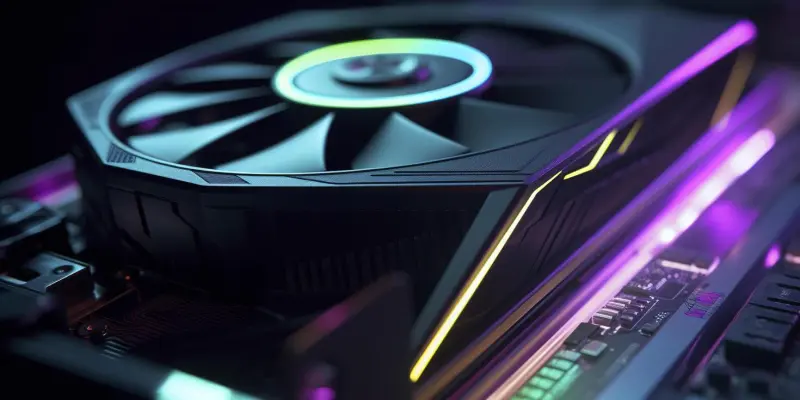The anticipated release of Nvidia’s RTX 5060 Ti GPU is generating considerable excitement within the gaming community, especially among budget gamers looking to improve their gaming experience economically. However, the excitement is tempered by concerns about the potential financial burden that may come with these new GPUs. Leaked images of MSI’s third-party models have revealed crucial details about the RTX 5060 Ti, including its utilization of the PCIe 5.0 interface and the presence of various power connectors. These revelations raise significant questions about compatibility with existing systems, particularly for those using older motherboards with PCIe 4.0 or PCIe 3.0 interfaces. Consequently, many gamers might find themselves facing the need for additional upgrades, such as new motherboards, to fully harness the capabilities of the RTX 5060 Ti. This situation complicates the prospects of budget gaming, pushing the cost a step higher.
Compatibility and Performance Concerns
The shift towards the PCIe 5.0 interface by Nvidia in the RTX 5060 Ti GPU is a notable advancement aimed at enhancing performance. However, the potential for issues arises for those who still operate on older PCIe 4.0 or PCIe 3.0 motherboards. These older interfaces may not be able to fully utilize the advanced capabilities of the new GPU, leading to subpar performance. This concern is particularly pronounced for lower-end GPUs like the RTX 5060 Ti, which, due to their inherently lower processing power and prospective 8GB VRAM configuration, might suffer noticeable performance drops when not paired with a PCIe 5.0 motherboard. The dilemma for budget gamers lies in deciding whether investing in the RTX 5060 Ti is worthwhile if it necessitates additional hardware upgrades, such as a new motherboard. This challenge could prompt gamers to reconsider their upgrade paths, balancing the desire for better graphics performance against the financial outlay required to achieve it. The compatibility issue thus poses a significant barrier, particularly in a market where budget gaming is already becoming increasingly difficult due to rising costs and limited availability of affordable, yet high-performing, components.
Market Challenges and Financial Strain
Beyond the compatibility issues, the broader market context presents further challenges for budget gamers. The ongoing difficulty of securing GPUs at their launch prices is exacerbated by several factors, including inflation, scalpers, low availability, and fluctuating tariffs. These elements have collectively driven up the cost of gaming hardware, making it more expensive and less accessible for budget-conscious gamers. The situation has led to an environment where finding reasonably priced GPUs is challenging, often necessitating waiting or resorting to less desirable alternatives.
Moreover, while older GPUs might offer a temporary solution, their limited availability and occasionally inflated prices contribute to the financial strain. Often, gamers may end up paying more than anticipated due to these market dynamics, pushing budget gaming further out of reach. This scenario is part of a larger trend where the financial feasibility of remaining current with technological advancements is increasingly in question, particularly for those who aim to keep their gaming expenses within a reasonable range.
Future Implications for Budget Gaming
The introduction of GPUs like the RTX 5060 Ti, designed to leverage the PCIe 5.0 interface, signals a broader industry shift towards newer technologies that enhance performance. However, this shift has significant implications for the budgeting strategies of gamers. While high-end GPUs tend to maintain their performance on older interfaces, lower-end models like the RTX 5060 Ti might struggle if used with outdated motherboards. This technical incompatibility could result in gamers needing to spend more than initially planned to achieve the desired performance gains. Such developments underline the evolving landscape of gaming hardware, where staying updated increasingly entails higher investments. For budget gamers, this means carefully evaluating the cost-benefit ratio of every upgrade, considering not just the GPU but also the potential need for complementary system components. As manufacturers push forward with innovations, the balance between performance and cost will remain a crucial consideration for gamers aiming to maximize their investments while managing expenses.
Conclusion: Navigating the Evolving Hardware Market
Nvidia’s shift to the PCIe 5.0 interface with the RTX 5060 Ti GPU marks a significant performance enhancement. However, issues may arise for those using older PCIe 4.0 or PCIe 3.0 motherboards. These outdated interfaces may not fully utilize the new GPU’s capabilities, leading to less than optimal performance. This issue is particularly concerning for lower-end GPUs like the RTX 5060 Ti. With its lower processing power and potential 8GB VRAM setup, it might experience noticeable performance drops without a PCIe 5.0 motherboard. For budget gamers, the dilemma is whether investing in the RTX 5060 Ti is worth it if it requires additional hardware upgrades, like a new motherboard. This challenge might lead gamers to weigh their upgrade plans carefully, balancing the desire for better graphics performance against the financial costs needed to achieve it. Compatibility concerns thus create a significant barrier, especially as budget gaming becomes increasingly challenging due to rising costs and the scarce availability of affordable yet high-performance components.

